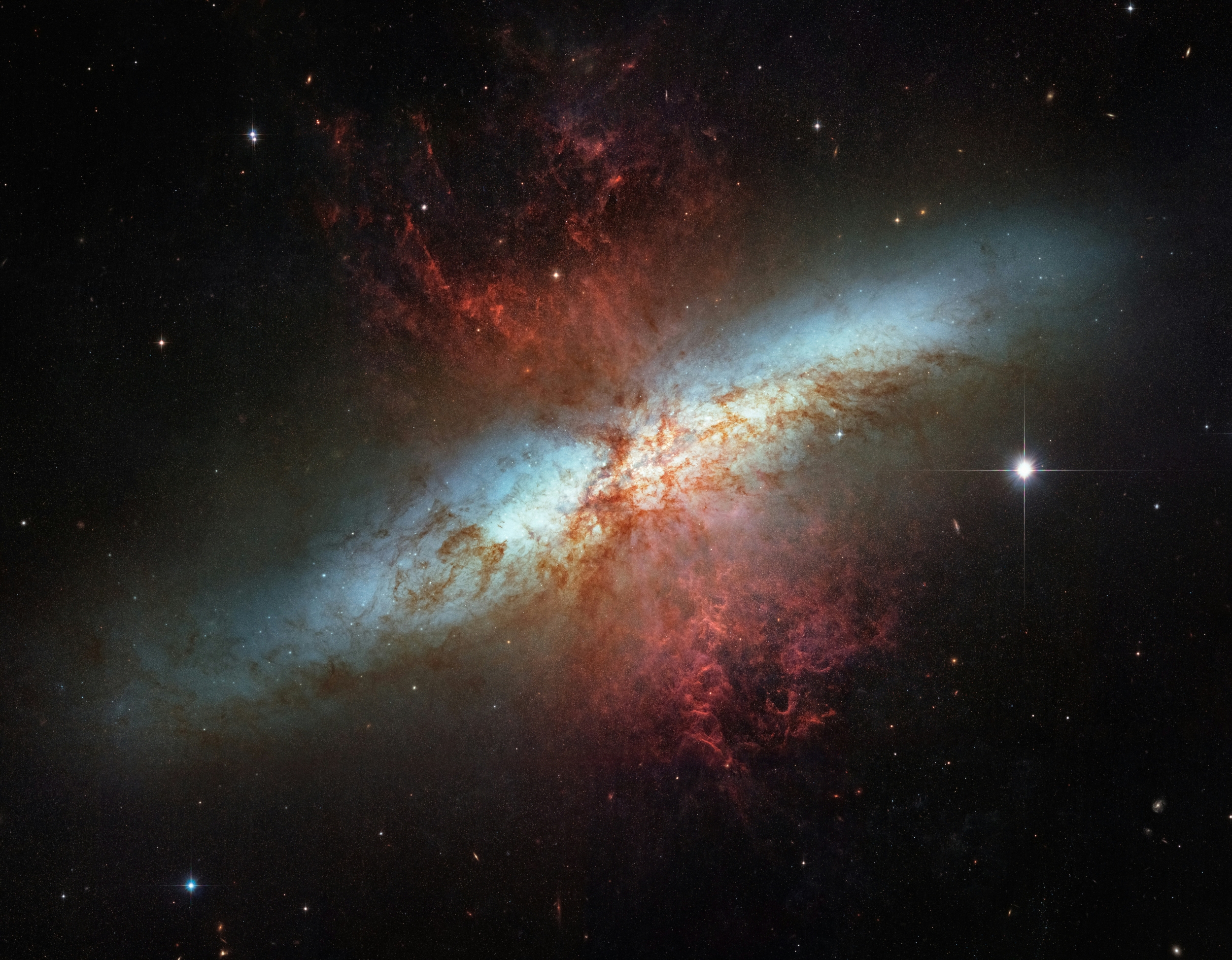Science
JWST’s Infrared Breakthroughs Illuminate Hidden Cosmic Wonders

The James Webb Space Telescope (JWST) is revolutionizing our understanding of the cosmos with its advanced infrared technology, enabling scientists to explore regions of space obscured by thick clouds of cosmic dust. Unlike conventional telescopes that rely on visible light, JWST utilizes long infrared wavelengths to unveil stars, galaxies, and nebulae that have remained hidden for billions of years. This innovation allows for unprecedented imaging of cosmic dust, providing astronomers with critical insights into star formation, galaxy evolution, and the early universe.
Unmatched Infrared Capabilities
What distinguishes JWST is its specialized engineering tailored to enhance sensitivity to infrared radiation. Cosmic dust, composed of tiny particles such as carbon, iron, ice, and silicates, obstructs visible light but becomes transparent primarily in the infrared spectrum. JWST effectively exploits this property, enabling astronomers to observe celestial bodies that would otherwise remain concealed.
At the core of this capability lies JWST’s impressive 6.5-meter gold-coated mirror, constructed from 18 hexagonal segments designed to capture faint infrared signals from billions of light-years away. The telescope operates at frigid temperatures of approximately -233°C, achieved through a sophisticated five-layer sunshield that blocks heat from the Sun and Earth. This cooling is vital, as even minimal warmth can generate infrared noise that disrupts observations.
Two of JWST’s essential instruments exemplify how its technology facilitates deep penetration into cosmic dust. These instruments work in tandem to map dust in exquisite detail. Regions once perceived as dark voids, such as the Pillars of Creation and the Carina Nebula, now reveal hundreds of newly formed stars, intricate molecular structures, and shock waves induced by stellar winds. This advancement allows astronomers to explore areas that have been opaque for decades.
Significant Discoveries and Future Implications
The scientific value of JWST’s dust-penetrating abilities is immense. Here are some of its most noteworthy discoveries:
– Identification of previously hidden star nurseries.
– Detailed mappings of complex dust structures.
– Observations of faint galaxies that emerged shortly after the Big Bang.
These breakthroughs underscore how crucial JWST’s technology is for understanding every stage of the universe’s evolution, from star birth to galaxy formation.
The leaps in technology provided by JWST are set to influence astronomical research for years to come. Its capacity to see through dust is not merely a visual advantage; it fundamentally alters what scientists can study. Star formation, once largely theoretical, can now be observed directly. The telescope’s sensitivity also assists researchers in detecting faint galaxies that formed in the aftermath of the Big Bang, thereby filling crucial gaps in our comprehension of early cosmic history.
For many astronomers, the most vital contribution of JWST is its unparalleled precision. Each image generated contains layers of data regarding temperature, chemical composition, and energy emission. By amalgamating this information, scientists can reconstruct the behavior of dust in extreme environments, how young stars accumulate mass, and how planets begin to form from cold, dusty disks.
The technology behind JWST also paves the way for future missions. Its successful operation highlights the need for increasingly sensitive instruments in the coming decades. Astronomers are already planning complementary observatories that will build on JWST’s achievements and extend them into different wavelengths.
In a broader context, the discoveries made by JWST help answer fundamental questions about the universe: How did stars form? How did galaxies grow? And how did the universe transition from a chaotic cloud of dust and gas to the structured cosmos we observe today? Thanks to JWST, these mysteries are gradually becoming more comprehensible.
In conclusion, the James Webb Space Telescope has transformed our perspective on the dusty universe, enabling astronomers to investigate star nurseries, ancient galaxies, and intricate stellar environments with unprecedented clarity. Through its advanced infrared systems and powerful instruments, JWST uncovers the hidden intricacies of cosmic dust that shape the universe’s evolution. As JWST continues to deliver groundbreaking discoveries, it will remain a cornerstone of modern astronomy for generations to come.
-

 Health3 months ago
Health3 months agoNeurologist Warns Excessive Use of Supplements Can Harm Brain
-

 Health3 months ago
Health3 months agoFiona Phillips’ Husband Shares Heartfelt Update on Her Alzheimer’s Journey
-

 Science1 month ago
Science1 month agoBrian Cox Addresses Claims of Alien Probe in 3I/ATLAS Discovery
-

 Science1 month ago
Science1 month agoNASA Investigates Unusual Comet 3I/ATLAS; New Findings Emerge
-

 Science4 weeks ago
Science4 weeks agoScientists Examine 3I/ATLAS: Alien Artifact or Cosmic Oddity?
-

 Entertainment4 months ago
Entertainment4 months agoKerry Katona Discusses Future Baby Plans and Brian McFadden’s Wedding
-

 Science4 weeks ago
Science4 weeks agoNASA Investigates Speedy Object 3I/ATLAS, Sparking Speculation
-

 Entertainment4 months ago
Entertainment4 months agoEmmerdale Faces Tension as Dylan and April’s Lives Hang in the Balance
-

 World3 months ago
World3 months agoCole Palmer’s Cryptic Message to Kobbie Mainoo Following Loan Talks
-

 Science4 weeks ago
Science4 weeks agoNASA Scientists Explore Origins of 3I/ATLAS, a Fast-Moving Visitor
-

 Entertainment4 months ago
Entertainment4 months agoLove Island Star Toni Laite’s Mother Expresses Disappointment Over Coupling Decision
-

 Entertainment3 months ago
Entertainment3 months agoMajor Cast Changes at Coronation Street: Exits and Returns in 2025









